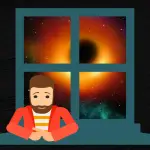Yes, comets are generally bigger than asteroids.
In the article that follows, we’ll explain why comets are bigger as well as answers to other commonly asked comet questions.
Are Comets Bigger Than Asteroids? (Explained)
Introduction
Comets are usually larger than asteroids because they continuously gather mass as they orbit in space.
Both comets and asteroids are irregularly shaped leftovers from the solar system’s formation.
In some cases, asteroids can be larger than comets depending on the asteroid and comet you are comparing.
However, the main difference is the components of the two cosmic rocks.
Comets consist of ice, dirt, and metals.
Asteroids are composed of rocks or metals. Both irregularly-shaped cosmic bodies have rounded edges due to their constant orbiting in space, despite their different materials.
They become rounded because they are being constantly tossed.
However, their irregularly shaped because they are uneven and cannot find an even center of gravity to spin straight.
What is a comet?
Comets are cosmic snowballs made of combinations of frozen gases, rocks, and dust that orbit the sun.
NASA considers comets frozen leftovers in the solar system or dirty snowballs because they are large masses of ice and rock.
The organic materials break into pieces from melted snow, leaving small dust around the sun as they move closer to the sun.
There are billions of comets orbiting the sun, with 3,743 current known comets in the Kuiper Belt.
One of the most common comets known by the public is Halley’s Comet.
Comets are formed from ice and organic materials as they go through orbit.
The longer these frozen comets are in orbit, the larger they will become, accumulating more rocks and ice along the way until it changes orbit and moves toward the sun.
After moving to the sun’s orbit, it will eventually vaporize into dust.
What is an asteroid?
Asteroids are small rock formations orbiting the sun.
Most asteroids exist within the asteroid belt, located between the orbits of Mars and Jupiter.
There are billions of them. However, there are still not enough to create a whole planet or sustain life, even if combined.
The surface of these small rock bodies is covered in craters caused by hitting other small rocks and floating objects.
Since asteroids are breakable, they may crumble when hit.
The solar system formed asteroids along with the planets and various other celestial objects roughly 4.3 billion years ago.
They consist of various Earth and natural substances like rocks, silicates, minerals, metals, sands, and clay.
Asteroids orbit around the sun in irregular patterns because of their amorphic shapes, causing them to tumble rather than follow a direct path.
Comet vs asteroids (compared)
Asteroids and comets are both considered leftovers from the solar system’s formation.
Neither have moons or can support life because of their limited atmospheres.
As comets approach the sun, they will break into smaller pieces.
Since they break into smaller pieces, it is easy to mistake them for asteroids at this point, except for their wispy tail at the end, which increases the closer you get to the sun.
A wispy tail at the end of the coma only belongs to comets.
It happens when the sun vaporizes the ice on the side of comets and turns it into steam.
Although you can find asteroids and comets throughout space, they are confined to small areas within the solar system.
You can find asteroids within the asteroid belt, which is much smaller than where you can find the plethora of comets.
Are Comets Bigger than Asteroids?
Comets are larger than asteroids.
Neither of these relatively small orbiting masses is large enough for moons or has enough resources to support a living creature.
These cosmic landmasses have reached extreme sizes, and they are still smaller than planets or moons.
You can distinguish a comet from an asteroid based on its size, shape, and composition.
Comets are much larger than asteroids, with a coma and a long tail at the end, forming when it is roughly 5 times Earth’s distance from the sun.
Asteroids have no tail because they have no moisture.
Both have a similar texture.
However, the asteroid is more jagged than asteroids because the small pieces are fragments and not gathered masses.
Where Are Comets Found?
You can find comets all over the solar system.
Because each planet has a gravitational pull of its own, it is easy for comets to move from one part of the solar system to the other.
Most asteroids are in the Kuiper Belt, slightly beyond Neptune’s orbit in the inner layer of the solar system.
You can also find Comets in the Oort Cloud, which is the outer ring of the solar system.
Where are asteroids found?
Many areas of space have asteroids.
The most common place to find asteroids is the asteroid belt found in the asteroid belt between the orbits of Mars and Jupiter.
This area of space is referred to as the main asteroid belt.
There are many other areas of space that contain asteroids, but this area is much denser than the other areas.
Are asteroids round?
Asteroids are irregularly shaped, with mostly rounded edges due to their constant orbit in space.
Smaller asteroids can be cylindrical and have more jagged edges because other rocks can hit them.
Asteroids can range from small rocks to large masses more than 600 miles across.
There is an asteroid so large, called Ceres, that it is often considered a dwarf planet.
Are comets round?
Comets are amorphic figures that can appear round from Earth.
They consist of frozen organic material gathered in orbit.
They can be the size of a small town when frozen but will melt when they get closer to the sun.
Comets have comas that boil as they approach the sun and produce steam resembling a tail.
Wrap Up
It is easy to tell the difference between asteroids and comets based on several things, like physical characteristics and geographic location.
Comets are larger than asteroids by a significant amount because they collect mass as they travel throughout the several rings of the solar system as they travel toward the sun.
In contrast, most asteroids are near the asteroid belt.
However, you may also find them scattered across the whole solar system.
You might also like:
- Constellations For Agriculture
- 6 Obscure Constellations Few People Know
- Egyptian Constellations (List and Stories)
- Roman Constellations (List and Stories)
- Female Constellations (List and Stories)
- Best Free Stargazing App Options
- Comets and Meteors (Compared)
- Are Comets Bigger Than Asteroids?
- Best Constellations Everyone Should Know
- Reticulum Constellation Facts
- Draco Constellation Facts
- Can You Breathe on Jupiter?







